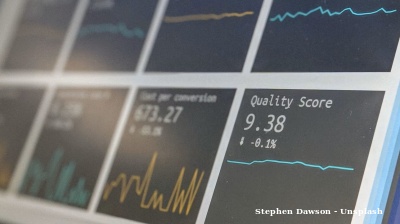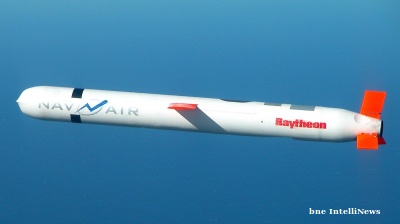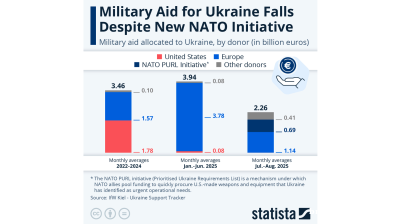Russian President Vladimir Putin has updated the 12 National Projects that were launched in 2019 to transform Russia and improve the quality of life. The programme was already expanded last year to National Projects 2.0 and he has upgraded the programme again with more spending projects to a National Projects 2.1 version.
Upon swearing in Putin for his next 6-year presidential term the Kremlin published a fresh edition of the so-called "May’s Decree" outlining Russia’s national development goals up until 2030 (with a possibility for these to be extended to 2036).
May's Decrees as being the main goals of Russian national development were first published in 2017 upon Putin's previous re-election. They were coupled with the National Projects spending spree, and the first government of now reappointed Mikhail Mishustin was mandated with their implementation.
However, even prior to the full-scale military invasion of Ukraine, the launch of the National Projects was upset by the coronavirus (COVID-19) pandemic turbulence and was partially rolled back. But most recently in March 2024 the Kremlin went back to the drawing board, attempting to improve the health of the Russian economy by updating the 12 National Projects.
The latest development targets outlined by the Kremlin in May's Decree are grouped into health and demographics, self-fulfilment and realising talents of Russian nationals, improving the quality of life, environmental, economy, technological leadership and digital transformation.
Specifically, the national goals include seven points:
- preserving the population, improving the health and well-being of people, supporting the family;
- realising the potential of each person, developing his or her talents, and fostering a patriotic and socially responsible personality;
- comfortable and safe living environment;
- ecological well-being;
- sustainable and dynamic economy;
- technological leadership;
- digital transformation of public administration, economy and social sphere.
RBC business portal notes that compared to the previous decree (the 2018 decree with 2020 amendments), the list of specific targets and objectives has halved to 82 from over 160. However, a specific GDP target has been returned and several new metrics have been introduced.
However, it remains unclear to what extent the May’s Decree and the National Projects will actually determine the development of Russian policymaking, as they have been twice derailed by the COVID-19 pandemic and the full-scale military invasion of Ukraine.
"National projects? Are you kidding me? No one [has thought] about them for a long time," an unnamed federal official told The Bell in spring 2024. The Bell also reminds that the Prime Minister Mikhail Mishustin in his speech to the State Duma in April 2024 mentioned the National Projects, but did not focus on them specifically.
Whatever the actual implementation may be, improving demographics and reducing economic inequality in Russia are the main and most specific goals of the latest May’s Decree. With these targets in mind the launch of 11 national projects is planned, to cover various spheres of life, from motherhood to housing construction, to reduce imports and expand production and exports, and in general to significantly increase the state's participation in income redistribution.
“The declaration of this goal and the reforms it implies, including a shift to progressive taxation, may mark the government's final shift from liberal ideology to digital paternalism,” Kommersant daily comments.
Ambitious Demographics
The 2020 decree contained a goal to ensure "sustainable population growth" in Russia. The main demographic goals of the new decree are to increase the total fertility rate (TFR) to 1.6 by 2030 and to 1.8 by 2036; to increase life expectancy to 78 years by 2030 (this goal appeared in the previous version and was retained) and to 81 years by 2036 (the new benchmark). At the end of 2023 life expectancy stood at 73.4 years.
At the end of 2023, the SCR, which stands for the average number of births a woman would give birth to during her entire reproductive period (i.e. from 15 to 50 years of age) if fertility rates in each age group were maintained at the 2023 level, was 1.4. The coefficient reached its maximum in recent history in 2015 - 1.78. That is, the decree sets a target of exceeding this record level by 2036.
RBC notes that SCR targets are ahead of RosStat statistics agency’s projected trajectory even in the optimistic scenario: there, the indicator of 1.6 children per woman on average is reached only by the beginning of 2034, and the indicator of 1.79 is only achieved by the end of 2045.
The decree does not set direct goals to reduce mortality – except for the reduction of deaths due to road accidents 1.5-fold by 2030 and in half by 2036. The previous version of the decree outlined targets to reduce mortality, particularly in the working age.
As followed by bne IntelliNews, Russia’s population fell by about 1.7mn people from 2019 to 2024, to a total of 146mn according to RosStat (including about 2mn people in Ukraine’s Crimea annexed by Russia in 2014).
RosStat forecasts the demographics to continue to worsen, with population declining to 139mn people by 2046. Alternative studies, such as one by the Russian Academy of Science’s Institute for Economic Forecasting suggested the population would shrink to 136mn in 2050 in the best-case optimistic scenario.
New Social Security Goals
For the first time, the May’s Decree set the goal of reducing inequality, as measured by the Gini coefficient (income concentration index), to 0.37 by 2030 and 0.33 by 2036. At the end of 2023, the Gini index was 0.403 (the closer it is to zero, the less income inequality).
The poverty rate should be reduced to less than 7% by 2030 and below 5% by 2036, according to the decree. At the end of 2023, the figure stands at 8.5%, according to RosStat. The analysts surveyed by RBC see the recent poverty level dynamics as broadly in line with the targets set.
Besides the specific targets for income inequality reduction, the latest May’s Decree includes targets for providing Russians with an average minimum living space per person (at least 33 square metres by 2030 and at least 38 sqm by 2036, compared to 28.8 sqm in 2023).
The decree maintains unchanged targets in terms of sustainable growth in household incomes and pensions. The minimum wage (MROT) under the decree should reach at least RUB35,000 per month by 2030, more than double the level of 2023 (RUB16,200).
Unrealistic GDP Targets
The specific goals include Russia having the fourth-highest purchasing power parity GDP globally by 2030, with the value of imported goods and services amounting to about 17% of GDP and exports diversifying away from energy, with agriculture seen as an important driver of foreign trade.
The 2018 decree set the goal of seeing Russia "among the world's five largest economies," but in 2020 amendments the target was removed.
According to the latest April global outlook update of the International Monetary Fund (IMF), at the end of 2023, the Russian economy accounts for 2.95% of the total global GDP, which makes the sixth place in the world ranking.
The World Bank ranked Russia’s economy fifth in the world in mid-2023. RBC reminds that Putin himself cited the World Bank's data when mentioning Russia's entry into the top five largest economies in the world, and the authorities are likely to continue to use this benchmark.
According to the World Bank's data, in 2022 Russia's share of global GDP was 3.25%, behind Japan (3.47%) and ahead of Germany (3.23%). India (ranked 3rd) is out of reach with 7.2%. To attain fourth place, Russia would need to surpass Japan.
The analysts surveyed by RBC also note that taking fourth place by GDP (PPP) should be achieved by growing the Russian economy above the world average (the same goal was set in the previous version of the decree). The analysts are sceptical of any possible technological or demographic “leaps” that could allow that. The average global GDP growth rate is just above 3%, while Russia's average annual GDP growth rate over the last decade has been about 1.1% (according to RosStat).
RBC also cites Tatiana Orlova, a leading emerging markets economist at Oxford Economics, who considers the current IMF forecast to be realistic: Russia falling to seventh place by 2030 in terms of its share in global GDP, leaving Indonesia behind. By 2050 Russia will also be overtaken by Brazil and Turkey in terms of PPP GDP, Orlova cites Oxford Economics' own estimates.
Further Public Sector Digitisation
Underpinning the broader economic goals are a set of targets in economic digitisation and introduction of new technologies. By 2030, Russia should also be among the top 25 nations in terms of using robotics in manufacturing, and in the top ten contributors of scientific knowledge.
In terms of digitisation, by 2030 virtually all government services should be available online, with broadband internet access planned to be available to 97% of Russian households by 2030 and 99% by 2036.
To remind, Prime Minister Mikhail Mishustin, who will continue to head the government, is a trusted technocrat who previously successfully digitalised Russian tax system. He has been the prime minister since 2020, when his government swiftly replaced that of long-time Putin proxy Dmitry Medvedev.
More broadly, technological leadership is hoped to be achieved through the formation of new markets in such areas as bioeconomics, unmanned aircraft systems, artificial intelligence, etc. May’s Decrees stipulate an increase in spending on research and development to at least 2% of GDP by 2030.
The equity market
The decree also sets a target for the growth of the stock market – by 2030 its capitalisation should reach at least 66% of GDP, and by 2036 – up to 75%. This would mean almost twofold growth: at the end of 2023, the capitalisation of the stock market was RUR58.1 trillion, while GDP was RUR172 trillion, which means that the market capitalisation is about 34% of GDP.
BCS Global Markets estimated for RBC that at 66% of GDP capitalisation (and given flat GDP growth at compared to 2023 and 4% target inflation) the Moscow Exchange index would amount to about 9,000 points versus currently just above 3,400. Other analysts believe that the goal is achievable, given that since the beginning of 2024, the Russian stock market has already added over 15% in capitalisation. However, they believe that transparency and corporate governance, that has taken a hit since 2022, would have to improve.
Features

BEYOND THE BOSPORUS: Investigators feel collar of former Turkish central bank deputy governor
Regime gangs continue to hustle for gains. Some Erdoganist businessmen among the losers.

Journalist beaten to death in Istanbul as security conditions in Turkey rapidly deteriorate
Publisher, meanwhile, is shot in leg. Reporters regularly experience violence, judicial harassment and media lynching.

Agentic AI becomes South Korea’s next big tech battleground
As countries race to define their roles in the AI era, South Korea's tech giants are now embracing “agentic AI”, a next-generation form of AI that acts autonomously to complete goals, not just respond to commands.

Iran's capital Tehran showcases new "Virgin Mary" Metro station
Tehran's new Maryam metro station honours Virgin Mary with architecture blending Armenian and Iranian design elements in new push by Islamic Republic




